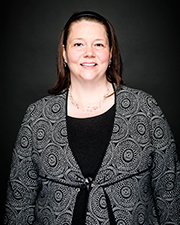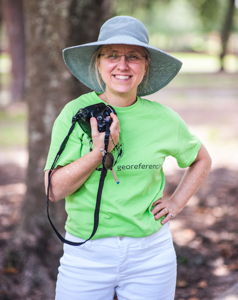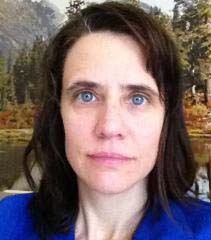WebinarWatch on demand
Assuring the quality of your data: A natural history collection community perspective
Speakers

David Bloom
VertNet
David is a geographer by training, a museum geek by trade, and a perennial student of the world with a penchant for making information, particularly museum data, collections, and resources, available to anyone who is interested in learning more about the place in which they live. In nearly all of his endeavors, professional and avocational, David always winds up building bridges between people and creating tools that help them get the information they need. His past professional experiences include the founding of a grassroots, community-based nonprofit educational society promoting cross-cultural appreciation, personal empowerment and creative and responsible community development, in Dharamshala, India; serving multiple museums in positions ranging from docent to senior administrator to board member, and building a highly interactive web site and museum exhibition with Bill Nye the Science Guy. Currently, David is coordinating VertNet, a global museum database of vertebrate natural history collections.

Laura Russell
VertNet
Laura helps biodiversity institutions publish their occurrence and taxonomic data online for VertNet, an NSF-funded collaborative project that makes biodiversity data free and available on the web. Through VertNet, she maintains a close relationship with both the Global Biodiversity Information Facility (GBIF) and iDigBio to ensure accessibility to data. She works with both groups and with the guidance of the VertNet steering committee and information architects on ways to improve the quality of the data and advance the technological infrastructures for sharing and using data online for research. Additionally, through outreach activities, she shares this knowledge with other communities in the interest of growing the content and quality of biodiversity data available online.

Deborah Paul
iDigBio
Debbie’s current research for iDigBio is focused on biodiversity informatics skills and workforce training services as they relate to best practices for biological specimen digitization workflows, collection of and research use of field data. Prior to the iDigBio Project, she worked for Morphbank as data analyst, technical writer, and user services contact teaching contributors how to format their data for upload to Morphbank. She earned her B.S. in biology and M.S. in education from Florida State University. Some of her interests include economic botany, ceramics, fossils, genealogy, and good food.

Katja Seltmann
Cheadle Center for Biodiversity and Ecological Restoration
As Director of the Cheadle Center for Biodiversity and Ecological Restoration, Katja directs the three main research and programmatic areas; collections management, education, and restoration. Her own research agenda is in the field of biodiversity informatics, or data science research of digitized natural history collection records, arthropod diversity in restoration habitats, and expanding the STEAM (Science, Technology, Engineering, Art, and Math) educational impact of restoration natural areas and natural history collections.
Drawing from examples within the taxonomic and natural history collection communities, this webinar will detail the data types and challenges of biological specimen data. We’ll explore the value and import of data quality open resources, the current status of data assurance practices as well as some more practical ‘how-to’ examples of implementing data quality assurance (QA) methods. Read more
Drawing from examples within the taxonomic and natural history collection communities, this webinar will detail the data types and challenges of biological specimen data. We’ll explore the value and import of data quality open resources, the current status of data assurance practices as well as some more practical ‘how-to’ examples of implementing data quality assurance (QA) methods. For example, QA of publicly shared data is critical for effective use and reuse. As part of the data life cycle, QA often occurs following the collection of data. However, planning for quality assurance in advance of data collection is time efficient and much cheaper than trying to clean up and standardize later. QA planning can help avoid commonly occurring data collection / entry errors.
Watch previously recorded video